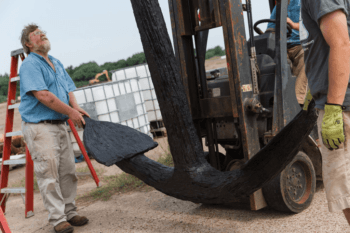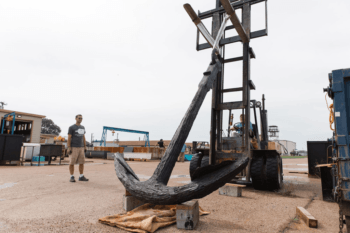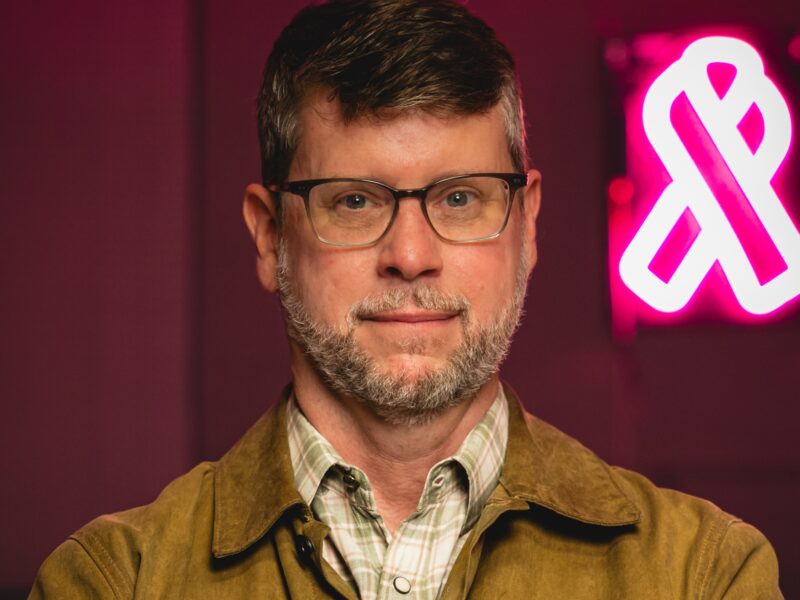Historic Anchor Restored, But Where Is The Ship?

Researchers at Texas A&M University have been restoring a 2,425-pound anchor found off the coast of the Pacific Northwest for two years, and the project is finished. Now the mystery facing them is, just where did the more than 200-year-old anchor come from?
Jim Jobling, lab manager of Texas A&M’s Center for Maritime Archaeology and Conservation, says it was initially believed the 10-foot long anchor came from the HMS Chatham, a British vessel that was well known in the area around 1792.
But further inspection has researchers convinced it was from a later time period, most likely the 1820s.
“That means we don’t know which ship it came from, and it won’t be easy to find out,” Jobling explains.
“We know that the anchor came from a later time period, and due to its size and weight, probably a much larger ship than the Chatham. It’s going to take some digging to find out where the anchor originated.”
The anchor was brought to the Texas A&M campus by two researchers in the Seattle area by pickup truck two years ago by Doug Monk, who found the anchor off Whidbey Island. A forklift will place the anchor back into the same pickup in a few days when the men make the return trip to College Station.
 “They hope to find a museum for it,” Jobling says of the anchor.
“They hope to find a museum for it,” Jobling says of the anchor.
“It deserves a final resting place. After the restoration, it’s in pretty good shape and it’s something people in the Puget Sound area would like to see.”
The anchor is one of many such projects Jobling has worked on his 30 years at the conservation lab. He estimates he and his team have worked on 145 projects and restored almost two million artifacts over the years.
“Each piece has a little bit of history behind it, and that’s what makes all of this so interesting,” he adds. “We are preserving our past for our future.”





